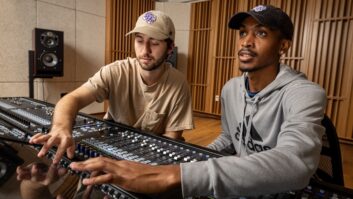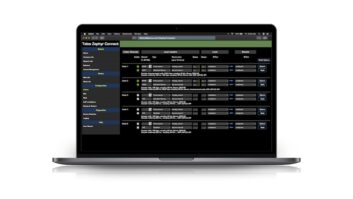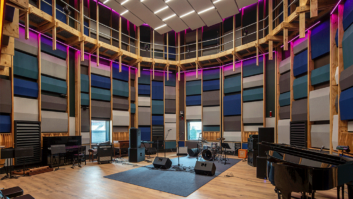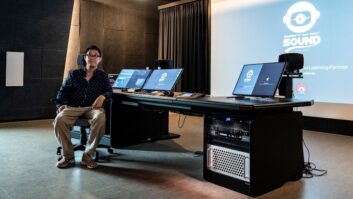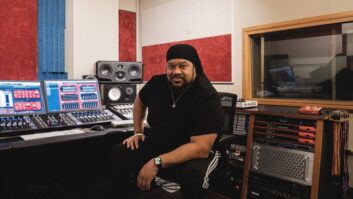
Nashville, TN (June 4, 2024)—Belmont University’s Mike Curb College of Entertainment & Music Business has installed two more SSL Origin 32-channel analog mixing consoles, bringing the school’s total to four.
The two latest Origin consoles have been installed in the historic Quonset Hut and Columbia Studio A on Nashville’s Music Row. Belmont previously integrated two SSL Origins at its main campus and at Ocean Way Nashville Recording Studios, which the university also owns, at the beginning of 2022.
The four Origin installations bring consistency and efficiency to the teaching environment, explains instructor Michael Janas, the chair of audio engineering technology. “The goal, starting several years ago, was to have the same console in all four of our main student facilities. All of our studio production classes that use these facilities learn on the same console. That allows us focus just on production techniques, as opposed to having to teach a new mixing console signal flow or a new workflow every eight weeks.”
The school’s teaching tools also include SSL’s E Series Dynamics Modules in 500 Series format, which are integrated into three of Belmont’s studio classrooms.
Fab Factory Opens Remodeled Melody A
Compared to the output routing and patching of the older consoles that were previously in the Quonset Hut and Columbia Studio A, Janas says, “The SSL Origin has much more of a modern flow, because nowadays people are really using direct outputs. We’ve been very pleased with Origin at Ocean Way Studio B and on the campus at REM Studio A, using them for our second-level class. Origin has helped us clean up some of the things that we do in teaching and has really helped students understand signal flow and allowed them to focus on producing music or audio.”
Having used the initial two consoles for two years, he has come to use the SSL E Series “242” EQ section on every input channel, he says. The Q values in the high and low mid-frequency range sections are smaller, and therefore offer a wider bandwidth, than some of the school’s previously installed consoles. “A Q of 9 is a semi-tone,” he says of one previous console, and is arguably more appropriate for mastering. “The Q on the Origin is much broader. But even if students do make it narrow, it still sounds musical. I love having the filters on there, too.”
Janas continues, “But my favorite thing, and it sounds odd, is the stereo cues, because those cues are fast and they’re punchy sounding; they really rip. And the panning is excellent. The cues, to me, best represent what’s coming back off the monitor path, and when you’re working with musicians it’s those little things that make a difference,” he says. “Musicians respond differently when they have confidence that what they are hearing is exactly what is being recorded, not muddied or distorted by low-quality cue feeds, and that typically results in a better performance.”
